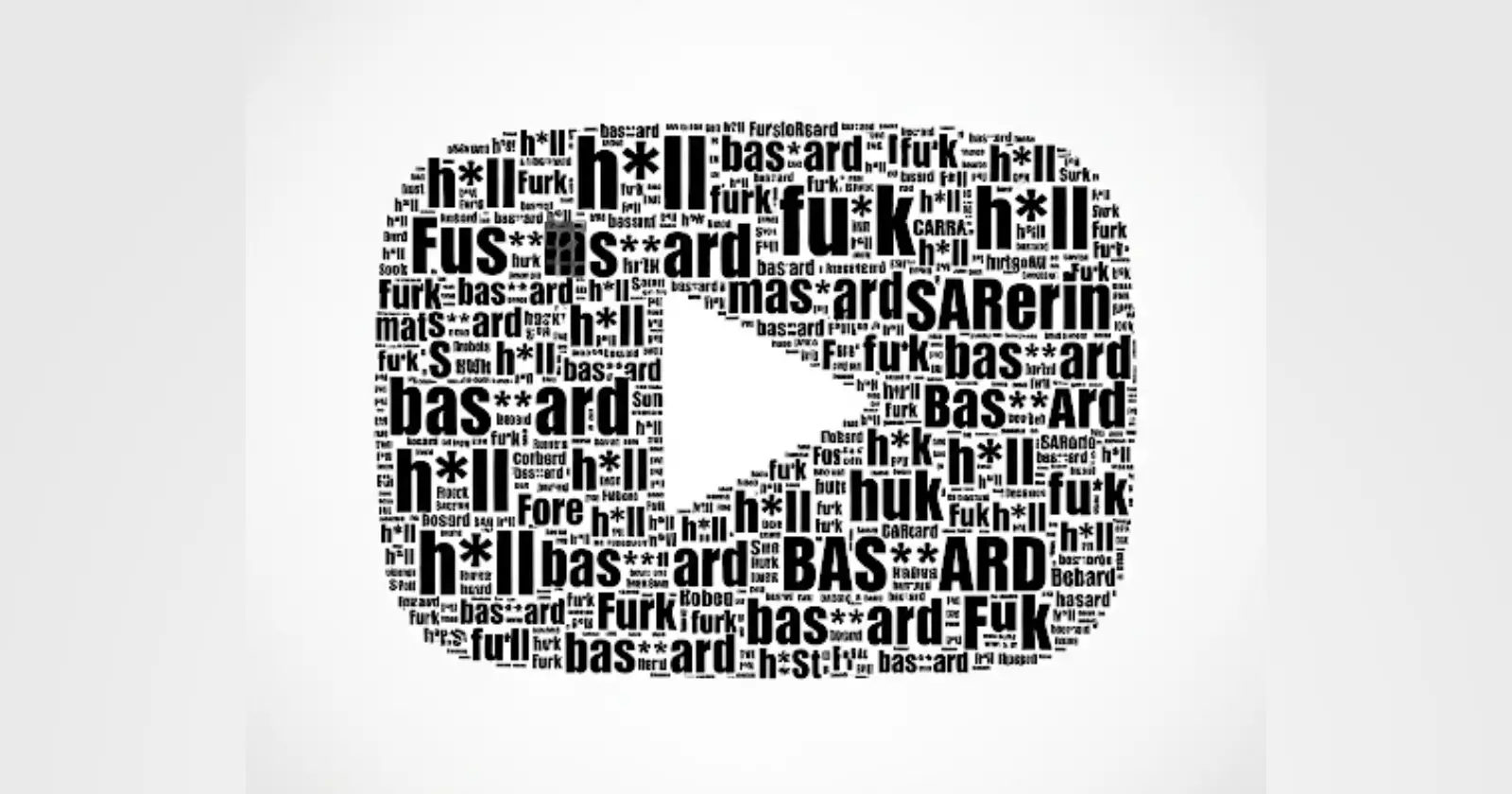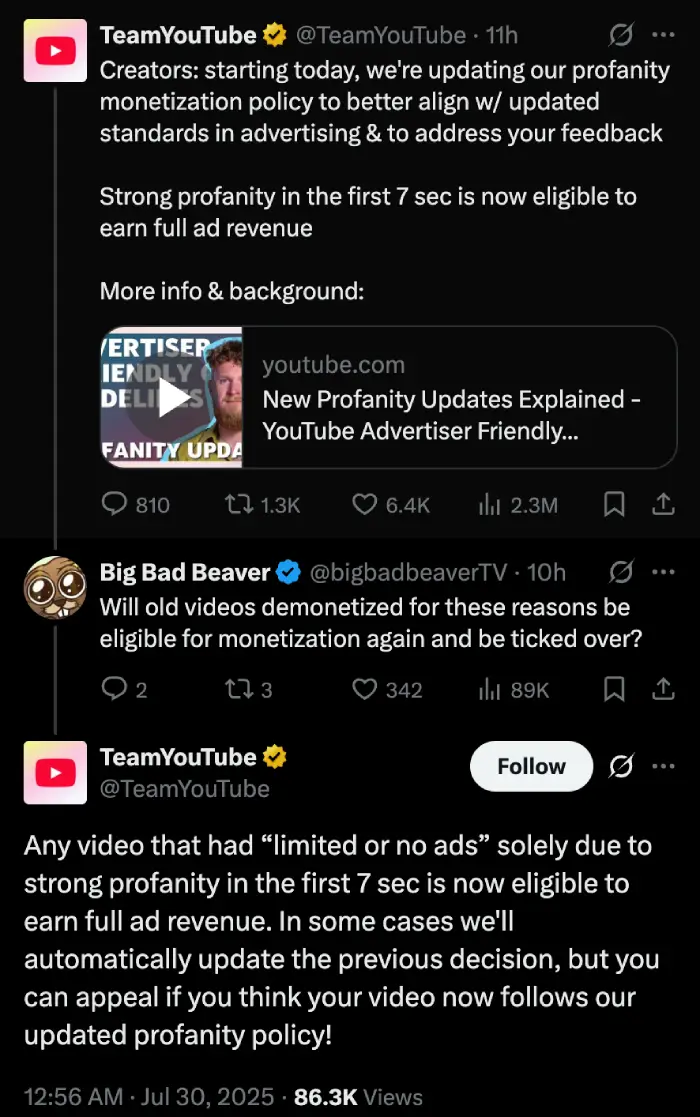YouTube has announced another significant change to its content monetization policies, allowing creators to use strong profanity like the F-word within the first seven seconds of their videos without facing reduced ad revenue.
The platform’s head of monetization policy experience, Conor Kavanagh, explained the policy shift in a recent video announcement. Previously, videos containing strong profanity in those crucial opening moments would receive limited monetization, earning creators the dreaded yellow dollar icon that signals restricted ad revenue potential.
This change comes after years of creator frustration with YouTube’s profanity policies. The original restrictions were implemented in November 2022, when the company began limiting ad revenue for videos with profanity in the first 8-15 seconds. The policy sparked immediate backlash from content creators who felt their artistic expression was being unfairly penalized.
YouTube’s reasoning for the original restrictions centered on aligning with traditional broadcast standards. Advertisers wanted distance between profanity and their ads, but that’s no longer the general sentiment. Companies now have better tools to target content that matches their comfort level with strong language.
However, creators shouldn’t view this as carte blanche for unlimited swearing. YouTube maintains restrictions on profanity in titles and thumbnails, and videos with excessive strong language throughout still violate advertiser-friendly guidelines. As Kavanagh put it, creators need to “pick and choose your f**ks carefully.”
YouTube also confirmed the policy change on X, with the official TeamYouTube account clarifying that videos previously marked with “limited or no ads” solely due to strong profanity in the first seven seconds are now eligible for full ad revenue. The platform indicated it will automatically update some previous decisions, though creators can also appeal if they believe their content now complies with the updated guidelines.
This change comes at a time when Australia has expanded social media restrictions to include YouTube in its ban for teenagers. So it’ll have to find the right balance between keeping creators happy and governments too. Nevertheless, most creators will likely welcome the change, which allows more freedom of expression.
Featured image generated using AI (Gemini)
TechIssuesToday primarily focuses on publishing 'breaking' or 'exclusive' tech news. This means, we are usually the first news website on the whole Internet to highlight the topics we cover daily. So far, our stories have been picked up by many mainstream technology publications like The Verge, Macrumors, Forbes, etc. To know more, head here.



